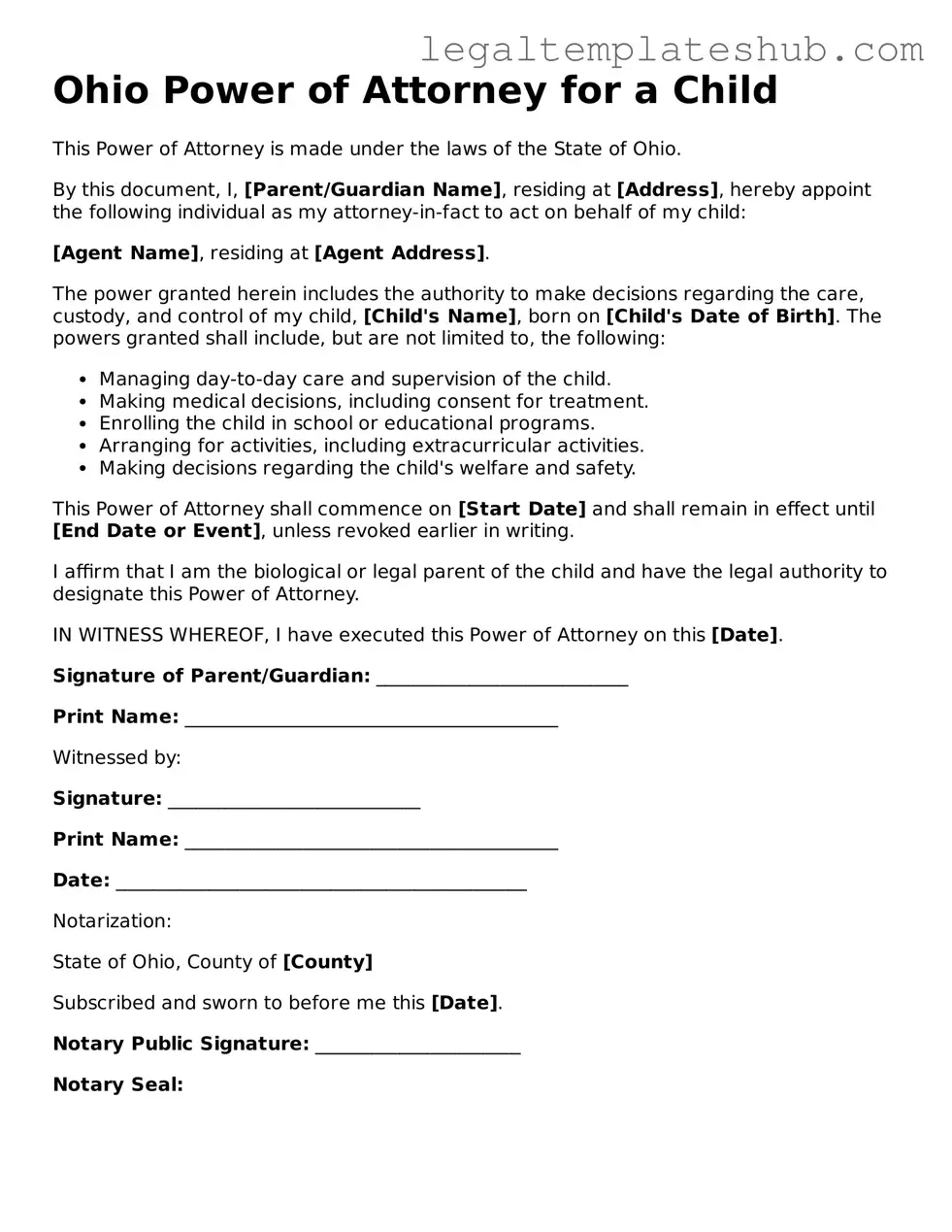Instructions on Filling in Ohio Power of Attorney for a Child
Filling out the Ohio Power of Attorney for a Child form requires careful attention to detail. This document allows a parent or guardian to designate another individual to make decisions on behalf of a child. Completing this form accurately is essential for ensuring that the designated individual has the authority needed to act in the child's best interest.
- Obtain the Ohio Power of Attorney for a Child form. This can typically be found online or at local legal offices.
- Begin by filling in the child's full name at the top of the form.
- Provide the child's date of birth in the designated section.
- Enter the full name of the parent or guardian granting the power of attorney.
- List the address and contact information of the parent or guardian.
- Identify the individual being granted power of attorney. Include their full name, address, and contact information.
- Specify the powers being granted to the designated individual. Be clear and detailed about what decisions they can make.
- Indicate the duration of the power of attorney. Specify if it is for a limited time or until revoked.
- Both the parent or guardian and the designated individual must sign and date the form. Ensure all signatures are in the appropriate places.
- Have the form notarized if required. Check local requirements to see if notarization is necessary.
After completing the form, keep a copy for your records. Provide a copy to the designated individual and any relevant parties who may need to reference it. This ensures that everyone is informed and prepared to act in the child's best interest when necessary.
